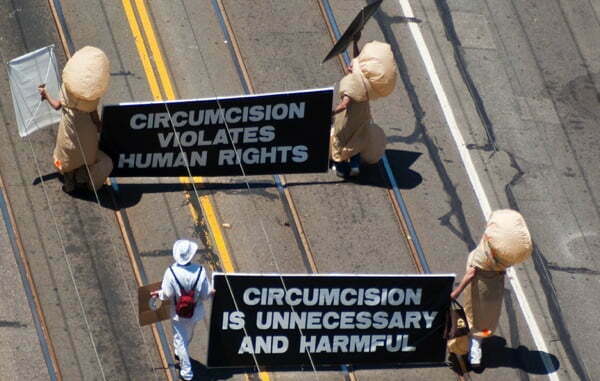Sexual Health
Male Circumcision & STI Prevention: A Link?
Last week, researchers from Johns Hopkins University and Makerere University working in Uganda released a new study about male circumcision and sexually transmitted infection transmission. Specifically, the study showed that there was a decreased risk of getting HPV and herpes if the male was circumcised.
Studies about male circumcision and STI prevention have gone back and forth on the effectiveness of circumcision as an intervention to prevent STIs.
Public Health & Circumcision
Little is known about why the foreskin might increase risk and researchers in the HIV/AIDS field, where this has been a hotly debated topic, seem to be pretty divided on the issue, with some arguing that circumcision in both males and females is pure genital mutilation and others arguing that male circumcision could be an effective intervention.
After speaking with some of my colleagues involved in HIV prevention and public health, one point stands out to me:
The analogy I use whenever this discussion is brought to my attention is that with this finding, and claiming that circumcision is the cause of the spread and infection of diseases, we (public health) are also claiming that a part of men’s body (foreskin) is the responsible for STDs (including>> HIV). Consequently, all the behavioral change interventions, and the responsibility individuals have of taking care of their own health and of practicing healthier behaviors are challenged. Therefore, if this scenario with foreskin and HIV are absolutely true, then, we should also promote radical mastectomy to reduce new cases of breast cancer, castration to reduce testicular cancer or rip off people’s teeth to avoid cavities.
I think this is a good point to make. By focusing our attention on this one body part that may or may not increase the risk of STIs (depending on which study you read), we discredit all the scientifically supported behavioral intervention programs and too some extent take away the choice (and responsibility) involved in protecting oneself against STIs.
Not to mention the fact that having large, respected public health interventions recommending to remove a body part is an extreme measure especially when research on the issue is so fraught with controversy.
The Influence of Culture & Race
Cory Silverberg, in his About.com Sexuality article, points out some of the questions that researchers should ask in the future to determine if mass male circumcision is really the answer. I think the most important points he brings up are ones around race and culture.
Most of the circumcision studies done in Africa (done by mostly Western universities and doctors) involve circumcsizing adult men and studying their STI infection rates over a period of time, like the study released last week. This presents its own ethical and physical limitations although the same could be said for a parent having a circumcision done on a child.
The issue of male circumcision is complicated and, like many issues around sexuality and health, both sides of the argument for and against male circumcision have strong beliefs about the benefits or consequences of the issue when it comes to STI prevention.
I think this study should definitely be included in the conversation, but I’m not sure it’s enough to convince major medical research bodies and assocations to come out with banners flying, advocating for male circumcision for all.









